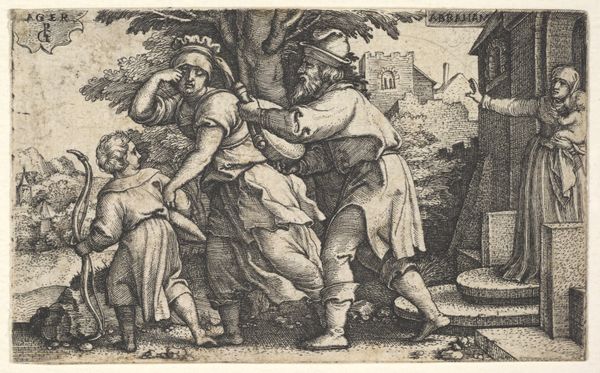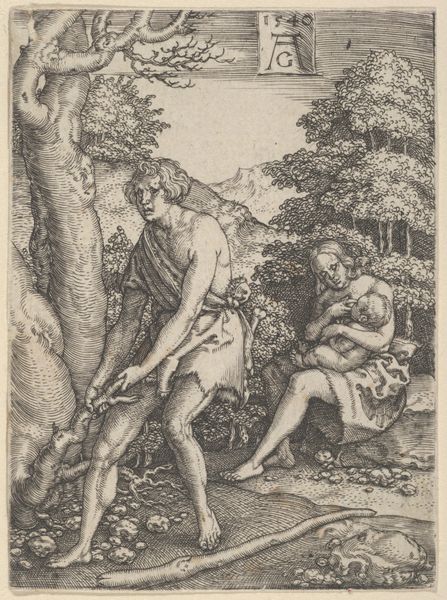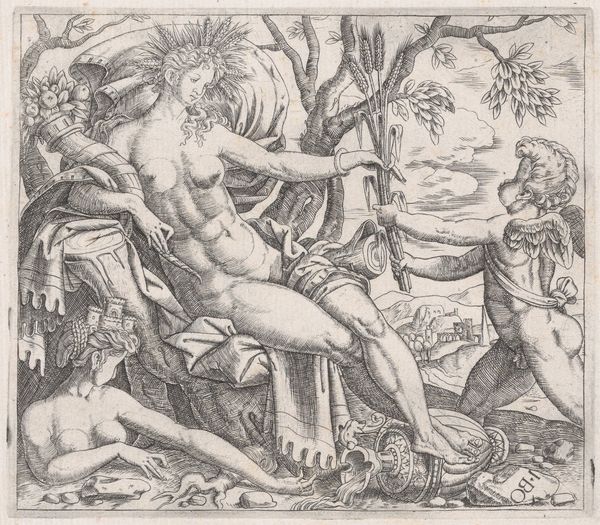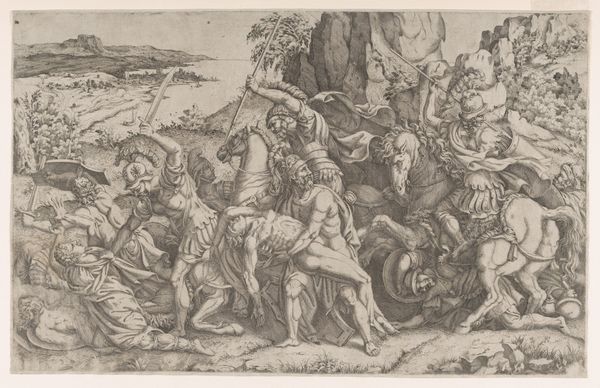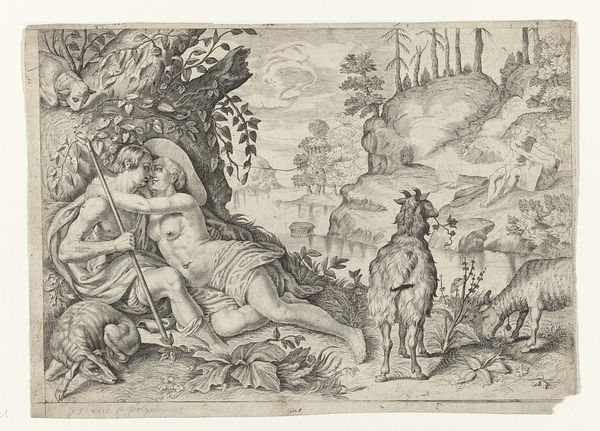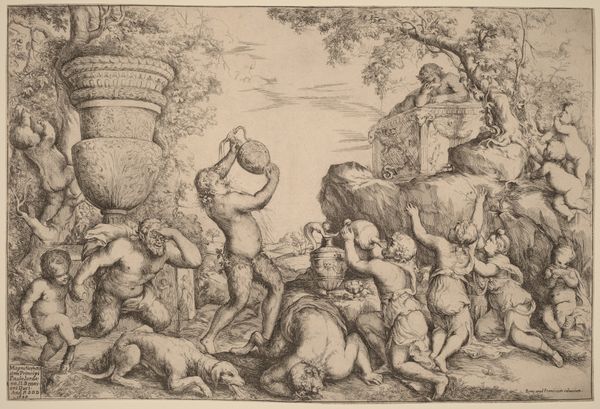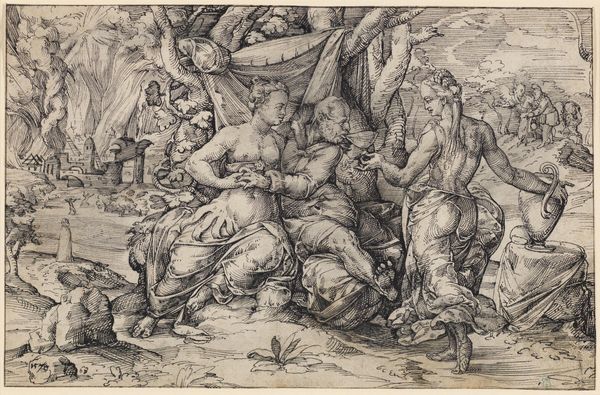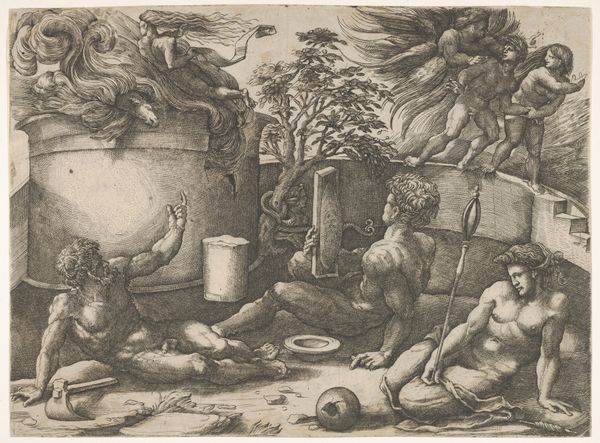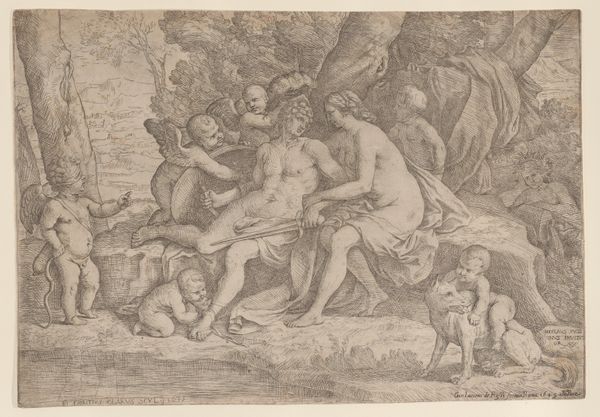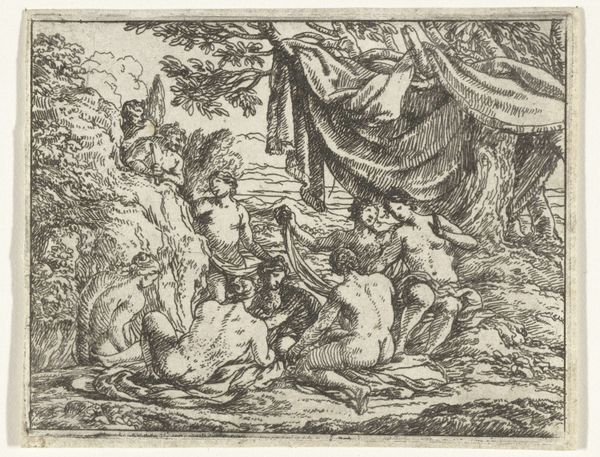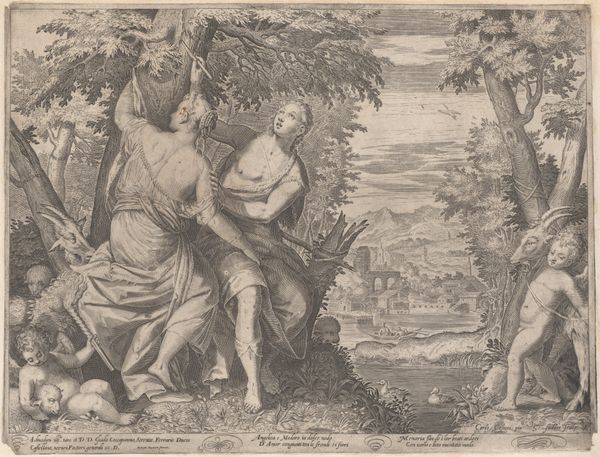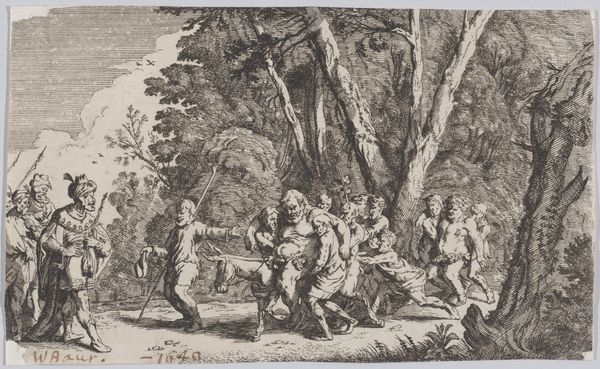
Abraham's Sacrifice, from "The Story of Abraham" 1500 - 1550
0:00
0:00
drawing, print, engraving
#
drawing
#
narrative-art
#
pen drawing
#
animal
# print
#
figuration
#
history-painting
#
northern-renaissance
#
engraving
#
angel
Dimensions: Sheet: 2 3/16 × 3 9/16 in. (5.6 × 9 cm)
Copyright: Public Domain
Curator: Let's discuss this print by Georg Pencz: "Abraham's Sacrifice," made sometime between 1500 and 1550. The location is the Metropolitan Museum of Art in New York. Pencz utilized engraving techniques, specifically a pen drawing. Editor: What a dramatic moment frozen in ink! The figures are so tightly packed; there's a real sense of compressed energy before release. Curator: Absolutely. It depicts the biblical story where Abraham is commanded by God to sacrifice his son Isaac. Think about the sheer technical skill in creating such detail with an engraving tool. Consider the workshops producing such images, the apprenticeship system… These prints would have been relatively accessible, circulating narratives and influencing visual culture widely. Editor: And what a powerful narrative it is. Visually, the angel swooping in to halt Abraham's raised sword is a striking example of divine intervention. Angels often carry associations with guidance and, of course, salvation in iconography. The ram standing by signifies the replacement sacrifice; it is rife with the imagery of divine provision and obedience tested. Curator: The choice of materials, too, matters. Engravings, multiples made from a metal plate, democratized images. Unlike a unique painting, this scene could be distributed, reaching many viewers who could ponder themes of faith, obedience, and divine intervention. Notice how Abraham, a man caught in this story's machinery of religious labor, enacts his role with physical intensity? Editor: Yes, the artist captures that fraught moment between action and grace. Look at Isaac's position, kneeling with upturned eyes. His hands are clasped in what reads as prayer or desperate plea. It really underscores the psychological weight. Curator: Consider, too, how prints like this influenced craft more broadly. Think about the way designs were spread and copied. These compositions show up on other things people are making like furniture or other decorative art pieces. Editor: Looking at it, it becomes clear that the cultural memory that hinges on such stark symbolism would surely permeate far beyond the aesthetic. It carries such weight! Curator: Right, this print offers more than religious storytelling. It shows the material conditions of artistic production and the flow of ideas across 16th-century society. Editor: Indeed. Seeing how this piece continues to speak through its symbols gives one much to reflect upon.
Comments
No comments
Be the first to comment and join the conversation on the ultimate creative platform.

